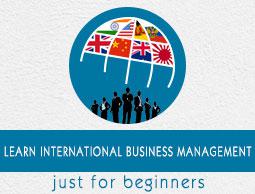Production Issues
Production is the core of any business organization having its operations on an international scale. International business firms must look closely at production factors for profitability and sustainability. Production refers to manufacturing, acquiring, and developing products for the business market.
Factors that Affect Production
There are three major areas an international organization must focus on in order to increase its production efficiency. They are −
- Facility Location
- Scale of Operation
- Cost of Production
We will look into each of them in the following sections.
Facility Location
Facility Location refers to the appropriate location for the manufacturing facility; it should have optimum access to customers, workers, transportation, etc.
The main goal of an organization is to satisfy and delight customers with its product and services. The manufacturing unit plays a major role in this direction. One of the most important factors for determining the success of a manufacturing unit is its location.
To get commercial success and retain its competitive advantage, any international business firm would pay attention to the following critical factors while choosing its business location −
Customer Proximity − Customer proximity is important to reduce transportation cost and time.
Business Area − Having other manufacturing units of similar products around the business area is conducive for facility establishment.
Availability of Skilled labor − There should be skilled labor available in and around the facility location.
Free Trade Zone − Free-trade zones usually promote and augment the establishment of manufacturing facility by offering incentives in custom duties and applicable levies.
Suppliers − Continuous availability and quality supply of the raw materials influences in determining the location of production facility.
Environmental Policy − As pollution control is very important, understanding of environmental policy for the facility location is critical.
Scale of Operations
Scale is the synonym for size in business. Business organizations can leverage on their size by making dealings, favorable terms, and volume-discounts with other firms.
Operating the business at scale means allocating and optimizing resources to get the greatest results and volume in all market segments. It is linked with optimization, not duplication, of efforts. Keeping costs under control while increasing the sales offers the opportunity for reducing costs and acquiring new customers, and more market share, without lowering the average margin (economies of scale).
Small-Scale Business − Also termed a small business, a small-scale business employs a small number of workers and does not have a high volume of sales. The U.S. Small Business Administration states that small-scale businesses have fewer than 500 employees. Financially, a non-manufacturing small-scale business is one that earns below or equal to $7 million a year.
Large-Scale Business − Based on the home country and the industry, a small-scale company usually employs between 250 and 1,500 people. Anything above that is a large-scale company.
Economies of Scale − It refers to the cost advantages that a business obtains due to its size, output, or scale of operation. Usually, cost per unit generally decreases with the increasing scale, as fixed costs are spread out over more products.
Cost of Production
It is a cost incurred by a company in manufacturing a product or delivering a service. Production costs depend on raw material and labor. To determine the cost of production per unit, the cost of production is divided by the total number of units produced. It is important to know the cost of production to better price an item or a service and to decide its total cost to the company.
Cost of production includes both Fixed and Variable Costs.
Fixed costs do not change with the level of output. They usually include rents, insurance, depreciation, and set-up costs. Fixed costs are also known as overhead cost.
Variable costs refer to those costs which vary with the level of output, and are also known as direct costs or avoidable costs. Examples include fuel, raw materials, and labor costs.
Make-or-Buy Decisions
Make-or-buy decisions are taken to arrive at a strategic choice between manufacturing an item internally (in-house) or buying it externally (from an external supplier). The buy side of the decision is also known as outsourcing. Make-or-buy decisions of a firm is important when it has developed a product or part – or significantly modified a product or part – but is having problems with the current suppliers, or has decreasing capacity or changing demand.
The major reasons for manufacturing an item in house includes the following −
- Cost attributes (less expensive to make)
- Intentions to integrate the operations
- Productive use of excess plant capacity (using present idle capacity)
- For direct control over production / quality
- When design secrecy is applicable to protect proprietary technology
- Unreliable / incompetent suppliers
- Very small quantity of production
- Controlling lead time, transportation, warehousing costs
- Political, social, or environmental pressure
Buy decisions are applicable under the following conditions −
- Insufficient local expertise
- Cost considerations (less expensive)
- Small-volume requirements
- Limited production or insufficient capacity
- Intentions to maintain a multiple-source policy
- Indirect managerial control factors
- Procurement and inventory factors
- Brand preference


